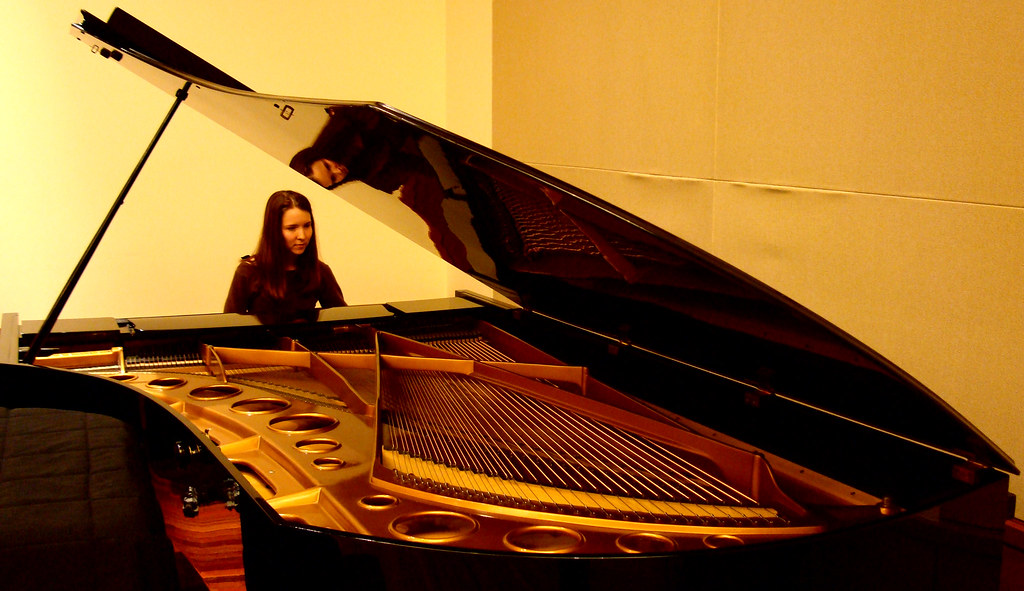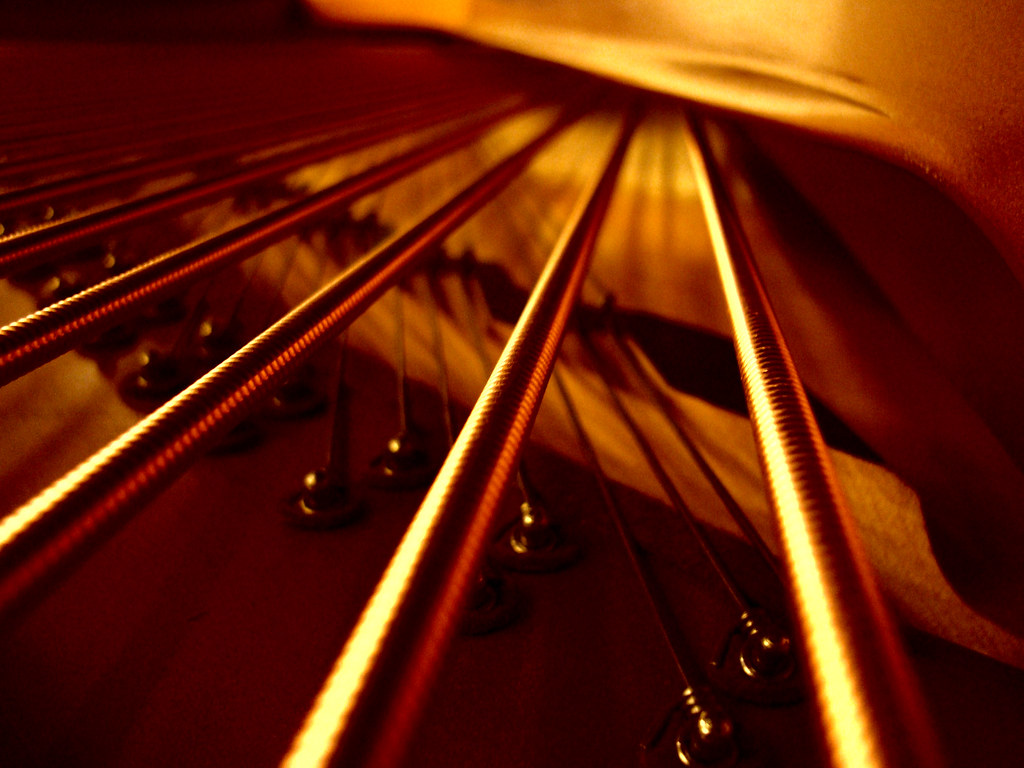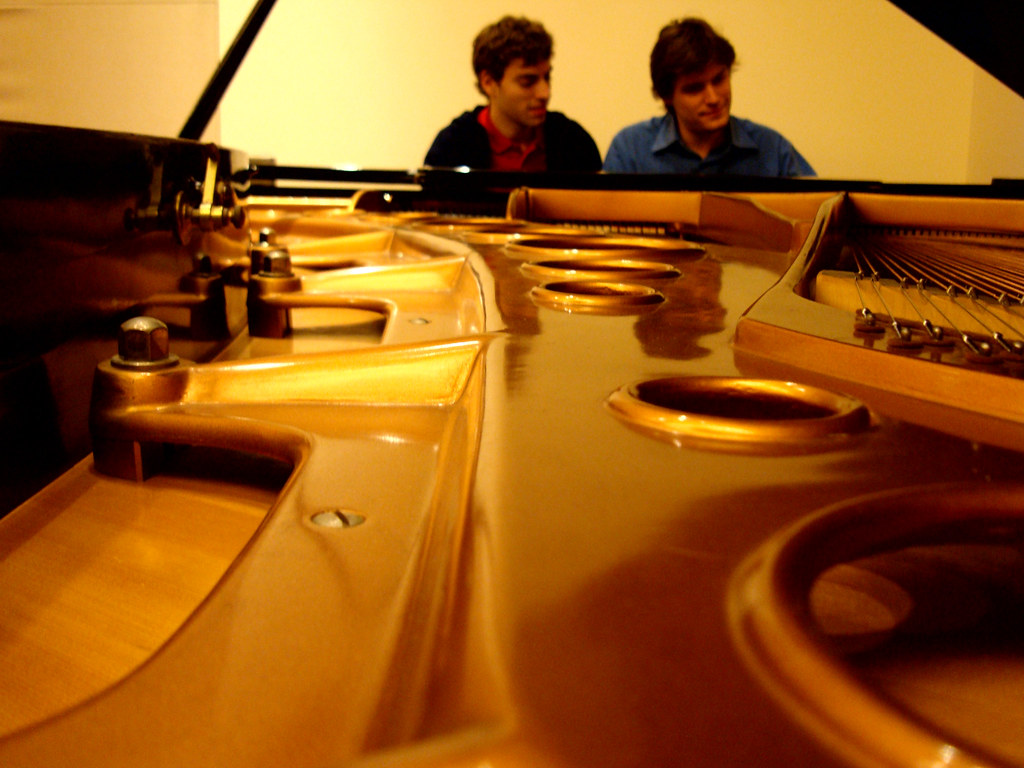 This monster piano was just purchased by Professor Bailey for use by the Music Department. It's a Bösendorfer Imperial Grand Piano made in Austria, complete with 97 keys for a total of 8 octaves (a normal Steinway Grand Piano has only 88 keys). The extra bass keys are in fact hidden under a wooden flap (which seems a little silly) but are remarkably the clearest bass notes I've ever heard on a piano.
This monster piano was just purchased by Professor Bailey for use by the Music Department. It's a Bösendorfer Imperial Grand Piano made in Austria, complete with 97 keys for a total of 8 octaves (a normal Steinway Grand Piano has only 88 keys). The extra bass keys are in fact hidden under a wooden flap (which seems a little silly) but are remarkably the clearest bass notes I've ever heard on a piano.
A quick history lesson on pianos
Early harps were quickly transformed into the harpsichord, it's mechanical cousin. To play it, the musician presses a key, and that key is part of a mechanism with a quill attached on the end. The quill then plucks the string inside the harpsichord. By increasing the tension of the strings and changing from quills to tiny hammers, the fortepiano (meaning literally "the loudsoft" because you now could play either quietly or loudly) was born. Eventually the name was shortened to piano, and it became the instrument that we know today. Here's a closer look at the four thick bass strings you'll probably never see on another piano. You can also see here and in the photo above that this set of strings crosses diagonally over a set of strings just underneath them. This is because the bass notes need much longer and thicker strings, and placing them diagonally across the piano body saves space. The picture below shows the metal casing for the piano's soundboard. The strings of the piano create the notes, but it's the soundboard that acts as a resonator to project that sound. That's why there are those funky holes built into the soundboard's casing: to help the sound travel (that's also why you lift the lid of the piano).
Here's a closer look at the four thick bass strings you'll probably never see on another piano. You can also see here and in the photo above that this set of strings crosses diagonally over a set of strings just underneath them. This is because the bass notes need much longer and thicker strings, and placing them diagonally across the piano body saves space. The picture below shows the metal casing for the piano's soundboard. The strings of the piano create the notes, but it's the soundboard that acts as a resonator to project that sound. That's why there are those funky holes built into the soundboard's casing: to help the sound travel (that's also why you lift the lid of the piano).
I even have a short audio clip of Spencer playing this Bösendorfer. The low notes are just incredible.
Piano Clip
2.2.08
The Bösendorfer Piano
Subscribe to:
Post Comments (Atom)


4 comments:
Looks like imeem clipped this song at 30 seconds too. Jerks.
Your professor must be very well off -- a Bosendorfer costs about as much as the gross national product of some smaller countries. Not all Bosendorfers have the extra keys (at least, they didn't used to!)-- but you're right. The low notes are remarkably clear. A lot of that clarity comes from the way the strings themselves are made & wrapped and from the way they're oriented on the soundboard. Unfortunately, even Bosendorfer can't match the tone and timbre of the Steinway when it comes to higher and mid-range notes. (I know...personal opinion.) I'm glad you had a chance to become acquainted with this remarkable instrument!
Hey, it looks like imeem is buying Snocap. In a couple months you might be able to get "Sarah Brown" on imeem.
Wow, that piano is incredible!
Post a Comment